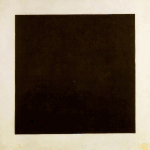|
bewbies posted:It is very complicated and isn't exactly my area of expertise but I'll try and answer this from a US army perspective. If we're talking about a high intensity conflict and light maneuver units (infantry or Stryker), the following is available: Where does MLRS fit into this? At what level of command are those things assigned?
|
|
|
|

|
| # ? Apr 29, 2024 17:50 |
|
SeanBeansShako posted:Pretty sure they grabbed and annexed Korea before the thirties guys. SpaceViking posted:It's not worded great, but I think they were talking about China. Yes, I know Japan grabbed Korea before the 1930s, and I was talking about China
|
|
|
|
SpaceViking posted:It's not worded great, but I think they were talking about China. IIRC in the 1930s the government didn't want to grab all of China but junior officers decided to manufacture poo poo like the Mukden Incident in order to take it all over. Then everything gradually snowballed because nobody wanted to lose face.
|
|
|
|
Phanatic posted:Where does MLRS fit into this? At what level of command are those things assigned? According to this http://www.fas.org/man/dod-101/army/unit/toe/ MLRS is a Division(Armored or Mechanized) and Corps level piece. I don't know if they get attached to lower level units in common practice.
|
|
|
|
Nenonen posted:I see you misspelled www.topicsinkoreanhistory.com there. But this is some top notch stuff so I will forgive you for the 404! Gack! Thanks for that. SlothfulCobra posted:Why did Japan abandon Korea after conquering it the first time? Even if the Ming hadn't intervened, once Hideyoshi died it was a scramble for the powerful Lords to get back to the mainland to secure their position there. They didn't want to be stuck out on the frontiers while people made plays for power at home. Rabhadh posted:The idea was that most naval engagements are won by boarding, so making it harder to board your ships and easier to board the enemies ship is what you want. Basically this. The reason the Korean Panokseon (the board roofed ship) and the Kobukseon (the Turtle ship) were so effective was because they turned over the game board of naval strategy. The Turtle ship could get close and was unboardable. The Panokseon could stay 500m away and blast with it's 12+ heavy cannons. Put a few 9 foot long explosive fire bolts through the weak cedar hull of an enemy boat operating in rocky and strange waters and then let nature do the hard work. That's why Yi Sunshin's Summer/Fall 1592 campaigns were so one sided. The Japanese could only fight one way and Yi prevented them from doing that so essentially the Japanese couldn't fight at all. folgore posted:How seaworthy was a ship like this? It seems like it would be incredibly top-heavy. It was seaworthy enough to make the crossing to Korea. But it was supposed to be an entertainment ship that demonstrated Hideyoshi's power and culture.  The inner one is the Ataka Bune class which was the largest standard class while the outer one is a one-off run of ships made by Hideyoshi's predecessor Oda Nobunaga in the 1570s. The Nihon Maru (which basically translates to the SS Japan, it was the flagsip) from the picture was built in 1591 and likely was even wider than Oda Nobunaga's special ships. The castle was really showy and probably wasn't that sturdy or well built. Lots of paper walls and light wood. Even if it was a real fortification, I don't think Korean naval strategy and fighting ability (and by fighting ability I mean a bunch of unarmoured poorly trained peasants with spears) would have allowed a siege. Why bother attacking it when you can just hang back and sink the ship?  Anyways, it wasn't intentionally sent into battle. It was in the port of Angolpo and ended up getting caught in the battle after Yi pursued the survivors of the Battle of Hansan Island back there. But it ended up being so darn big that it was unsinkable. Admiral Yi sent the Turtle ships (called the Flying Squadron, probably the best unit name of the war) to try and take it out but the people on board had carefully prepared anti-incendiary defences and were able to extinguish the fires and patch holes in the hull. The Japanese account of this battle is actually their only mention of Turtle ships and it's here that they say they were "covered in iron". No Korean source supports the "turtleship as an Ironclad" theory but that hasn't prevented modern day nationalists running wild with the quote. Pretty much every serious milhist these days agrees that it didn't have an iron shell. It had a thick pine shell covered in iron spikes that were concealed with straw which was kept wet with seawater. The Nihon Maru itself actually survived until 1856! Then it was broken into pieces and parts were moved into storage but it was destroyed by bombing in WWII. And because this is inevitably going to turn back into WWII chat, there's an interesting comparison between Yi Sunshin's leadership and that of the Soviet Commissars. Both had their men keep "ledgers of atrocities" and then encouraged them to repay those atrocities. Admiral Yi's war diary is pretty dark. THE LUMMOX fucked around with this message at 03:01 on Dec 8, 2012 |
|
|
|
You know your stuff so mind if I ask this, I'm curious at what the average Ming Chinese and Korean foot soldier would have worn and used in the 15th century during all of this?
|
|
|
|
|
SeanBeansShako posted:You know your stuff so mind if I ask this, I'm curious at what the average Ming Chinese and Korean foot soldier would have worn and used in the 15th century during all of this? Basically for 200 years all the Koreans ever had to do was chase away pirates and fight Jurchen raiders in the north. Fighting in the north basically meant hanging around in a fort until the raiders came. Then shooting at them with the ridiculously awesome composite bows that had a range of like 400+m and then following up with heavily armoured cavalry. The Korean cavalry were heavily armoured and well trained and great. They fought with huge flails.  But the infantry were almost entirely neglected. The infantry had almost no armour whatsoever beyond a padded jacket and felt cap. When they had shields (which was not often) they were bamboo.  Seriously look at these poor guys. Compared to the Japanese who had scale armour of iron and treated leather. It's not an exaggeration to compare it to the British vs. Zulu or Conquistadors vs. Indigenous Americans. Because training took so long, as soon as the experienced troops died the superior bows were useless. The remaining peasant levies usually fought with crappy swords and long trident like spears.  There was a common joke that if Korea was ironed flat, it would be as big as China. Look at this topographical map:  Korea is terrible country for cavalry. Cavalry is great when you're on the Yalu river attacking a short distance north or travelling up and down its banks putting out hotspots. But as soon as you're south of Pyongyang (which means flat land city) it's basically rocky mountains 600-1200m high the entire way to the southern tip. Not impossible to traverse by any means but it's a significant obstacle that really slows an army down. On the main road from Busan to Seoul there was one pass that was basically as defensible (possible moreso given the skill of Korean archers) as Thermopylae. The problem was that the Korean generals came from a 200 year tradition of "send out the cavalry" so instead of fortifying the pass, they let the Japanese travel through it and met them in the valley below it. In the Battle of Chungju the general sent wave after wave of Korea's best soldiers to die in the rice paddies in the valley below in futile cavalry charges against Japanese musketeers who were stacked rank upon rank and protected by long spearmen. Because it was a multiracial empire, the Ming forces were a lot more varied. The Koreans hated when the Ming sent northerners from Liaoning because culturally they were very similar to the Jurchen "barbarians". They were also not much better than the Japanese in terms of how they treated the local Korean peasants. They were also cavalry and thus pretty useless. They did have awesome interlocking steel armour called "Mountain" pattern. It resembled chain mail but it formed more of a plate and it's called Mountain because it vaguely resembled the Chinese character for the word mountain. What the Koreans always wanted more of was hard southern Ming infantry who were disciplined, "civilized" (they were Han Chinese) , had long spears, were well armoured, and were experts at land based cannon warfare. But a major problem was that the Korean winter was brutal for these southern troops. THE LUMMOX fucked around with this message at 05:39 on Dec 8, 2012 |
|
|
|
THE LUMMOX posted:Korea is terrible country for cavalry. Cavalry is great when you're on the Yalu river attacking a short distance north or travelling up and down it's banks putting out hotspots. But as soon as you're south of Pyongyang (which means flat land city) it's basically rocky mountains 600-1200m high mountains the entire way to the southern tip. This fact was relearned by the US during the Korean War. the mountains of Korea that made life difficult for cavalry also made life difficult for Armored Vehicles. The jagged terrain slowed progress and made aiming difficult (tanks have limited vertical gun traverse). As such the US had a limited armored presence in Korea, and when the Chinese attacked with their infantry the tanks could not act in the decisive role as expected.
|
|
|
|
awesomecopter posted:This fact was relearned by the US during the Korean War. the mountains of Korea that made life difficult for cavalry also made life difficult for Armored Vehicles. The jagged terrain slowed progress and made aiming difficult (tanks have limited vertical gun traverse). As such the US had a limited armored presence in Korea, and when the Chinese attacked with their infantry the tanks could not act in the decisive role as expected. Most the tanks sent to Korea ended up parked on ramps to act as additional artillery pieces once the mobile phase of the conflict ended.
|
|
|
|
GyverMac posted:I'm wondering about just how involved the Soviet union was in the Angolan civil war. I understaind they had boots on the ground, but was it just in advisory roles, or did they actively participate in major battles with a large number of forces? Cubans did the flying and fighting. As far as I know. e: with freely handed out soviet equipment, of course.
|
|
|
|
Vincent Van Goatse posted:Most the tanks sent to Korea ended up parked on ramps to act as additional artillery pieces once the mobile phase of the conflict ended. Yeah, pretty much turned into an infantry slugfest in the hills. Kind of weird seeing the massive advances back and forth during WW2 go straight back to WW1-level movements for 2 years straight.
|
|
|
|
wdarkk posted:IIRC in the 1930s the government didn't want to grab all of China but junior officers decided to manufacture poo poo like the Mukden Incident in order to take it all over. Then everything gradually snowballed because nobody wanted to lose face. Actually Japan started taking Chinese lands even earlier, in 1895, after the end of the first Sino-Japanese war. They only got around to annexing Korea in 1910, despite all but owning it after the results of this war. http://en.wikipedia.org/wiki/First_Sino-Japanese_War
|
|
|
|
was there any major fighting on the maginot line in 1940 or was it simply outflanked via Belgium/Holland
|
|
|
Trench_Rat posted:was there any major fighting on the maginot line in 1940 or was it simply outflanked via Belgium/Holland Yes http://en.wikipedia.org/wiki/Maginot_line#German_invasion_in_World_War_II After the German army swept through the Ardennes and penetrated the Maginot line fortifications along the Belgian border, the German decoy army attacked through the French-German section of the Maginot line.
|
|
|
|
|
There's something I've always, always wondered about. Why is poison so little used (or mentioned) throughout history of warfare? I mean, humankind seems to have known quite strong toxins from very early ages (as evident from numerous poison-based assassinations), given enormous advantage covering one's simple weapon with poison, why wasn't poison ever popular? All I've heard of are some hunter-gatherer tribes or rare battles in time of ancient Greece using this or that at this one battle... I imagine you could supply a barrel of poison to some ragtag peasant militia armed with pitchforks and crappy bows and send them against well-equipped and armed army triple that size and still make considerable dent in enemy lines. It's rather weird how basic biological warfare (dropping poo poo, rats, lepers and corpses at enemy to cause illnesses and plague) was commonplace, but not simplest and most effective form of chemical warfare -- boil some bad plants or something and dip your swords in to make "scratches" count tenfold. So were those moral issues? Ethics? Cultivation & production cost? Or something else? I don't think Bible restricts poison so why weren't we seeing this in 99999 battles of middle ages? I don't think it was too high-tech for history neither, knowledge of plants were probably even higher back then due wider usage of herbal medicine and hit&miss nature of it. Woohoo fucked around with this message at 14:06 on Dec 10, 2012 |
|
|
|
Woohoo posted:There's something I've always, always wondered about. Lack of effectiveness. Poisoning wells could be a fun little project, but coating weapons was not really necessary. Being poisoned was the least of your worries after being struck with something as damaging as a morningstar or battle axe. Infection and poor medical treatment were more likely to kill you.
|
|
|
|
Woohoo posted:There's something I've always, always wondered about. Poisons of the past were very slow-acting. You can't stab someone with belladonna or wolf's bane and make a significant difference in battle. Feces was a very common poison. Soldiers of many eras would rub their spear points and swords with manure (pig or human) before a battle, in order to cause infections that would fester and turn gangrenous sooner. This isn't mentioned for the same reason history books don't mention that heavy infantry went to the bathroom inside their armour - it's unpleasant, dishonourable, and not particularly relevant to history.
|
|
|
|
Is it really worth the effort if the other guy can just chop your head off in five seconds or shoot a cannonball through your intestines anyway? In the end it's still about who pokes the other side with steel better. Also remember that until pretty deep in firearms era most warfare was not concerned with straight killing the other dudes as much as breaking their formation and doing what you please with them while they retreat.
|
|
|
|
Untill the american civil war (and maybe the first world war) poor medical conditions killed more soldiers than weapons
|
|
|
|
Woohoo posted:It's rather weird how basic biological warfare (dropping poo poo, rats, lepers and corpses at enemy to cause illnesses and plague) was commonplace, but not simplest and most effective form of chemical warfare -- boil some bad plants or something and dip your swords in to make "scratches" count tenfold. Eh, dead animals and refuse were more readily available AND more effective than whathever they would be able to make. And when you want a rag tag militia to kill someone - what's the more expedient choice, have them use manure that's lying everywhere as Chamale suggested, or send them a pouch of something with which they are more likely to kill themselves than the enemy?
|
|
|
|
Trench_Rat posted:Untill the american civil war (and maybe the first world war) poor medical conditions killed more soldiers than weapons Yes, and it was exacerbated by opposing armies whenever possible. Covering weapons with poo poo to cause nasty infections is an old tradition, but there are other examples. The Black Plague got its start in Europe when the Mongols attacking Caffa used catapults to fling diseased corpses into the city. Bayonets in the 18th century had three edges in order to make a wound that couldn't be sewn up. An epidemic of influenza after World War I killed more people than the war itself. Insurgent groups like the Viet Cong and Mujahideen set traps designed to cause crippling injuries, which is more costly to the invading army than killing someone outright.
|
|
|
|
Thanks. Poisoning a well (or whatever water supply) from dark ages up to early gunpowder age would be actually awesome idea, since war camps were huge, slow and a simple saboteur dressed as beggar or pilgrim would gone unnoticed: as much as I've read, many of the big armies were followed by myriad of gypsies, merchants, barbers, entertainers and so on, because group of thousands of soldiers still needed services, goods and place to spend their loot. Especially since they had loot and likely no permission to leave the warband to spend it elsewhere. Guerrilla warfare with the aid of poison would quite effective, given lack in medicine and hygiene. E: And "slow-acting" would help to cover the effect until it's too late to raise alarm and close down the water supply. Woohoo fucked around with this message at 14:47 on Dec 10, 2012 |
|
|
|
Woohoo posted:Thanks. Well, chances are that the water was poisonous already... There was a reason why people used to drink so much beer, wine and cider: Untreated water from communal sources would gently caress them up.
|
|
|
|
Woohoo posted:Thanks. Poisoning a well is one tactic, but blocking it could be even better. Before the Battle of Hattin, Saladin's forces figured out that Crusaders were marching towards a water supply so they simply plugged the wells. Despite being lightly armoured and outnumbered, Saladin's forces easily won the battle against a group of desperate Europeans dying of thirst in the desert.
|
|
|
|
I have a question about submarines in the Second World War (although I think it also applies to the models used in the first). Specifically, what was the use of the sail/conning tower during submerged operations? Was it used for anything? Was it flooded? Was is its own small pressure hull? For that matter, is it used in modern submarines? It seems like extending the primary pressure hull to cover such a portrusion would weaken the overall structure.
|
|
|
|
Athas posted:I have a question about submarines in the Second World War (although I think it also applies to the models used in the first). Specifically, what was the use of the sail/conning tower during submerged operations? Was it used for anything? Was it flooded? Was is its own small pressure hull? For that matter, is it used in modern submarines? It seems like extending the primary pressure hull to cover such a portrusion would weaken the overall structure. It serves 2 main purposes. It's a lookout. In ww2 radar was still in its infancy, and in the early war period, many subs didn't have it. That and even today a blip doesn't tell you if you're looking at a nice juicy merchant convoy of the enemy or your own carrier battle group. The best way to tell was dudes with sharp eyes and binoculars. Second, it gets your periscope and other instruments closer to the surface without exposing the majority of the hull .
|
|
|
|
quote:The conning tower of a submarine was a small watertight compartment within its sail (or fin in British usage) equipped with instruments and controls and from which the periscopes were used to direct the boat and launch torpedo attacks. It should not be confused with the submarine's control room, which was directly below it in the main pressure hull; or the bridge, a small exposed platform in the top of the sail.
|
|
|
|
Athas posted:I have a question about submarines in the Second World War (although I think it also applies to the models used in the first). Specifically, what was the use of the sail/conning tower during submerged operations? Was it used for anything? Was it flooded? Was is its own small pressure hull? For that matter, is it used in modern submarines? It seems like extending the primary pressure hull to cover such a portrusion would weaken the overall structure. When you're attacking ships with your deck gun, when you're attacking ships at night, when you're making long transits and when you're patrolling, you're usually surfaced, which means that the conning tower is useful as an observation platform. In all submarines, it's still part of the same pressure hull - they just secure it with a watertight hatch as the sub goes under. (EDIT: Apparently it's a sail for modern subs and no longer a conning tower. I stand corrected there) In modern submarines, it's still used as a housing for the periscope, but also as a mounting for the dive planes and the various electronic antennae. gradenko_2000 fucked around with this message at 16:50 on Dec 10, 2012 |
|
|
|
Trench_Rat posted:Untill the american civil war (and maybe the first world war) poor medical conditions killed more soldiers than weapons It wasn't really until Vietnam (or maybe a bit in Korea) where a soldier could sustain a serious wound in combat and have a reasonable expectation to survive. Helicopter medivacs were a godsend for wounded troops. Even in WWII, certain types of wounds basically got you some last rites read and that's about it. There was a ton of problems with infections if you were in heavy combat and were under supplied with the right medical equipment, which happened a lot.
|
|
|
|
Speaking of battle wounds, I'm almost finished with Antony Beevor's Stalingrad and the last couple of chapters have been nothing but pure  at the conditions inside the 6th Armee kessel. The conditions described were just so goddamn bad I had to put it down at times to cleanse my mental palate. Just the vision of hordes of lice living off soldiers for months at a time is enough to make one shiver. at the conditions inside the 6th Armee kessel. The conditions described were just so goddamn bad I had to put it down at times to cleanse my mental palate. Just the vision of hordes of lice living off soldiers for months at a time is enough to make one shiver.
|
|
|
|
Do yourself a favour and don't pick up Anne Applebaums Gulag (not military history but a fantastic book none the less) if you don't like reading about lice.
|
|
|
|
VikingSkull posted:It wasn't really until Vietnam (or maybe a bit in Korea) where a soldier could sustain a serious wound in combat and have a reasonable expectation to survive. Helicopter medivacs were a godsend for wounded troops. I disagree for one reason. Penicillin. WW1 really broke the mold for truly horrible ways to die. Medical care in the field and behind the lines improved drastically between the wars.
|
|
|
|
gradenko_2000 posted:The conning tower doesn't have much use while you're submerged, but keep in mind that as of World War 1-2, submarines spent a LOT of time on the surface because battery power was limited to a few hours and so was oxygen/breathable air. WWI subs actually did more damage by attacking with their deck guns than with torpedoes, and in WW2 a favored tactic for sinking merchantmen used by both the Axis and Allies was to surface alongside and start popping away with the flak gun. Torpedoes weren't very reliable for quite some time.
|
|
|
|
VikingSkull posted:It wasn't really until Vietnam (or maybe a bit in Korea) where a soldier could sustain a serious wound in combat and have a reasonable expectation to survive. Helicopter medivacs were a godsend for wounded troops. But in WWII infection wasn't the primary killer, it was bleeding out; if you made it back to the aid station or field hospital where people could work on you, you stood a a much better chance. That's why helicopter medevac was such a big deal, it let you save a whole lot of people who were only being lost because you couldn't stop them from bleeding to death. tallkidwithglasses posted:Torpedoes weren't very reliable for quite some time. Early-war American torpedoes were so fantastically unreliable that I'm amazed that nobody went to jail over them. Phanatic fucked around with this message at 18:18 on Dec 10, 2012 |
|
|
|
gradenko_2000 posted:Speaking of battle wounds, I'm almost finished with Antony Beevor's Stalingrad and the last couple of chapters have been nothing but pure Ive been so close to buying that book on several occasions, but everytime I put it back down because I know that reading about the eastern front just makes me go  and loose all faith in humanity all over again. and loose all faith in humanity all over again.
|
|
|
|
Phanatic posted:But in WWII infection wasn't the primary killer, it was bleeding out; if you made it back to the aid station or field hospital where people could work on you, you stood a a much better chance. That's why helicopter medevac was such a big deal, it let you save a whole lot of people who were only being lost because you couldn't stop them from bleeding to death. Someone needs to go find those quotes from this thread and the old GBS History thread for Torpchat because it never ceases to amaze me just how bad they were. Edit: So much so that I found them myself. (Helps that I quoted both earlier in the thread) gradenko_2000 posted:I could write a book on faulty WW2 torpedoes. Phanatic posted:It's amazing to me that nobody went to jail over how awful American torpedoes were in WWII. The air-dropped Mark 13 mentioned above was consistently miserable until late in the war; one exercise in 1941 dropped 10 torpedoes, only one of which worked properly (four out of the ten just sank). A survey done in 1943 found that of 105 dropped at speeds > 150 knots, only 31% worked properly; 36% of them didn't even run. And the Mark 13 wasn't the worst torpedo. Acebuckeye13 fucked around with this message at 19:10 on Dec 10, 2012 |
|
|
|
VikingSkull posted:It wasn't really until Vietnam (or maybe a bit in Korea) where a soldier could sustain a serious wound in combat and have a reasonable expectation to survive. Helicopter medivacs were a godsend for wounded troops. The rate of survival for a seriously wounded man given medical attention within an hour was 4% in WW1, 50% in 1942 and 80% in 1945. If you could be seen by a medic within an hour and evacuated to a field hospital within four hours - and the entire US Army Medical Corps was geared up to do exactly that - you stood a pretty drat good chance of survival. This was in Europe, though, where medics, doctors and field hospitals could easily follow the front line as the army advances; helicopter medevacs became useful in the fluid combat conditions of Vietnam (as well as Iraq and Afghanistan) where terrain and infrastructure meant that traditional forms of transport couldn't be used. Penicillin and other antibiotics (and the various powders medics put on wounds to protect against infection) had a pretty big effect on casualty survival rates, and evacuation by helicopter had a decent effect as well; but it was triage which was responsible for most of the leap from a 4% chance to a 50% chance. Triage seperates patients into three categories:
If it wasn't for triage, many soldiers evacuated from the battlefield - whether by vehicle, air or being slung over someones shoulder - would never have been picked up at all and would simply have died where they had fallen.
|
|
|
|
Phanatic posted:Early-war American torpedoes were so fantastically unreliable that I'm amazed that nobody went to jail over them. German torpedos were almost as bad when the war started, but got fixed faster. Mostly because Dönitz threw a screaming fit after Norway and sacked, demoted and/or reassigned to the shittiest dead-end jobs avaiable a load of people working for the german counterpart of BuOrd. Magni fucked around with this message at 23:33 on Dec 10, 2012 |
|
|
|
A loving enemy sabotage program straight out of a James Bond story probably couldn't have done more damage to the U.S. war effort in the Pacific than the incompetence of everyone involved with the torpedo factory actually did. The true reason nobody ended up in jail was probably that everyone except the janitor was guilty and thanks to their monopoly of production facilities there'd be nobody left to build torpedoes once the guilty had been punished. Not to mention the top brass and the responsible Congressional bodies.
|
|
|
|

|
| # ? Apr 29, 2024 17:50 |
|
Did the IJN have really lovely anti-sub doctrine or what? Because even despite the shoddy American torpedoes, the unrestricted campaign waged in the Pacific seemed pretty effective. I also realize that US subs weren't the only Allied boats operating in the region, but I'm assuming they were the majority.
|
|
|





























